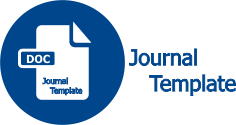Analisis Dan Perancangan Antarmuka Situs Portal Belajar Bagi Penyandang Dyschromatopsia
Abstract
Currently, many learning websites have been developed to assist people in self-learning from home. However, the developed learning websites are not yet user-friendly for individuals with dyschromatopsia. This is due to the design process not considering using colors that are easily distinguishable for users with dyschromatopsia. Based on the issues, a learning portal website interface that is friendly to individuals with dyschromatopsia is needed. In the design of this application, the method used is User-Centered Design (UCD). Through the UCD method, the needs of users with dyschromatopsia become the main focus of the research. Testing is conducted through usability testing using the Overall Relative Efficiency, Completion Rate, and the System Usability Scale (SUS) questionnaire to measure user satisfaction. The test results show an Overall Relative Efficiency value ranging from 72.675% to 92.130%, Completion Rate testing yields an effectiveness value range of 82% to 96%, and SUS testing yields a score of 81.25. In addition, the author also conducted testing for color-blind accessibility, which resulted in the finding that the contrast ratio of all the pages on the CourseHack website meets the minimum contrast ratio standards.
Keywords
Full Text:
PDFReferences
Pemerintah Republik Indonesia, “UU No. 20 Tahun 2003 Tentang Sistem Pendidikan Nasional.” 2003. doi: 10.24967/ekombis.v2i1.48.
M. A. Frandini, I. Aknuranda, and R. I. Rokhmawati, “Analisis Tingkat Aksesibilitas Halaman Utama Situs Web Perguruan Tinggi Di Indonesia Berdasarkan WCAG 2.0,” Pengemb. Teknol. Inf. dan Ilmu Komput., vol. 2, no. 3, pp. 1045–1053, 2018.
M. Purwoko, “Prevalensi Buta Warna pada Mahasiswa Universitas Muhammadiyah Palembang,” J. Kedokt. Brawijaya, vol. 30, no. 2, pp. 159–162, 2018, doi: 10.21776/ub.jkb.2018.030.02.15.
H. B. Santoso, P. O. H. Putra, and F. F. H. S. Febrian, “Development & Evaluation of E-Learning Module Based on Visual and Global Preferences Using a User-Centered Design Approach,” Int. J. Emerg. Technol. Learn., vol. 16, no. 15, pp. 139–151, 2021, doi: 10.3991/ijet.v16i15.24163.
A. Abdurrahman and M. Ulfa, “Analisis Usability Sistem Komputerisasi Haji Terpadu Palembang Menggunakan Metode System Usability Scale (SUS),” J. Pengemb. Sist. Inf. dan Inform., vol. 2, no. 3, pp. 125–137, 2021, doi: 10.47747/jpsii.v2i3.553.
E. S. Soegoto, M. A. Fadhlurrahman, and Y. A. Hermawan, “Video streaming application design for color blind users,” in Journal of Physics: Conference Series, 2019, vol. 1402, no. 6. doi: 10.1088/1742-6596/1402/6/066083.
ISO 9241-210, “Human-centred design for interactive systems,” International Organization for Standardization. 2010.
E. Prayoga and R. Delima, “Perancangan dan Implementasi Dashboard Keuangan Persekutuan Joy Indonesia dengan Metode User Centered Design,” JUTEI, vol. 6, no. 2, pp. 95–102, 2022.
D. I. Sambo, K. A. Nugraha, and R. Delima, “Pembuatan Antarmuka Website Desa Jambuwuluk Menggunakan Metode User Centered Design,” J. Terap. Teknol. Inf., vol. 7, no. 2, pp. 79–88, 2023, doi: 10.21460/jutei.2023.72.266.
R. Delima, V. Novianti, A. W. Mahastama, and A. K. Astuti, “Building a Congregations Dashboard Using the User Centered Design Method,” in Proceedings - ICT 2023 - 29th International Conference on Telecommunications: Next-Generation Telecommunications for Digital Inclusion and Universal Access, 2023, pp. 1–6. doi: 10.1109/ICT60153.2023.10374041.
S. Widjaja, Mukhsin, D. Oktarina, and G. Tendra, “Aplikasi Pembelajaran Bahasa Jepang Dengan Metode User Centered Design (UCD),” JSR Jar. Sist. Inf. Robot., vol. 6, no. 2, pp. 176–189, 2022, doi: 10.58486/jsr.v6i2.175.
R. Gunawan, A. M. Joharudin, Y. Yudiana, and D. Awalludin, “Analisis Dan Implementasi Metode User Centered Design (UCD) Pada Pembuatan Sistem Informasi Perangkat Mengajar Guru Berbasis Mobile,” in Prosiding Seminar Nasional Inovasi dan Adopsi Teknologi (INOTEK), 2023, pp. 12–25. doi: 10.35969/inotek.v3i1.296.
C. Kartiko, A. C. Wardhana, and D. P. Rakhmadani, “Pengembangan Mobile Learning Management System Dengan User Centered Design (UCD) Menggunakan Flutter Framework,” J. Media Inform. Budidarma, vol. 6, no. 2, pp. 960–968, 2022, doi: 10.30865/mib.v6i2.3524.
M. S. Victoria and A. D. Indriyanti, “Penerapan Metode User Centered Design ( UCD ) dalam Merancang User Interface Learning Management System Website Torche Education,” J. Emerg. Inf. Syst. Bus. Intell., vol. 04, no. 03, pp. 157–167, 2023.
S. Rofiah, D. Sukma, and I. Maryani, “User Centered Design pada Augmented Reality untuk Mendukung Siswa dalam Pembelajaran Bangunan Bersejarah di jawa Barat,” Evolusi J. Sains dan Manaj., vol. 7, no. 2, pp. 66–72, 2019.
Z. Mukhtar, A. Herdiani, and E. R. Kaburuan, “Analisis Implementasi Metode Ucd Dalam Perancangan Sistem Pembelajaran Bahasa Ekspresif Untuk Digunakan Terapis Wicara Terhadap Penyandang Sindrom Asperger,” e-Proceeding Eng., vol. 6, no. 2, pp. 8488–8497, 2019, [Online]. Available: https://openlibrarypublications.telkomuniversity.ac.id/index.php/engineering/article/download/9815/9676
R. Adhitama, A. C. Wardhana, G. R. Pasfica, and Y. A. H. Pasaribu, “Pengembangan Aplikasi Monitoring Anak Berkebutuhan Khusus di Sekolah Luar Biasa Menggunakan Metode User Centered Design (UCD),” J. Comput. Syst. Informatics, vol. 4, no. 1, pp. 155–161, 2022, doi: 10.47065/josyc.v4i1.2602.
S. R. Henim and R. P. Sari, “Evaluasi User Experience Sistem Informasi Akademik Mahasiswa pada Perguruan Tinggi Menggunakan User Experience Questionnaire,” J. Komput. Terap., vol. 6, no. 1, pp. 69–78, 2020, doi: 10.35143/jkt.v6i1.3582.
F. I. Romadhanti and I. Aknuranda, “Evaluasi dan Perbaikan Desain Antarmuka Pengguna Sistem Informasi Musyawarah Masjid menggunakan Goal-Directed Design (GDD) (Studi Kasus : Masjid Ibnu Sina Jl.Veteran Malang),” J. Pengemb. Teknol. Inf. dan Ilmu Komput., vol. 4, no. 10, pp. 3313–3321, 2020, [Online]. Available: https://j-ptiik.ub.ac.id/index.php/j-ptiik/article/view/7919/3733
F. G. Sembodo, G. F. Fitriana, and N. A. Prasetyo, “Evaluasi Usability Website Shopee Menggunakan System Usability Scale (SUS),” J. Appl. Informatics Comput., vol. 5, no. 2, pp. 146–150, 2021, doi: 10.30871/jaic.v5i2.3293.
J. Brooke, “SUS: A ‘Quick and Dirty’ Usability Scale,” Usability Eval. Ind., no. November 1995, pp. 207–212, 1995, doi: 10.1201/9781498710411-35.
E. Santosa, K. A. Nugraha, and A. Filiana, “Pengembangan Dashboard Informasi Gereja Tangguh Bencana dengan Metode User Centered Design,” J. Tek. Inform. dan Sist. Inf., vol. 8, no. 3, pp. 522–536, 2022, doi: 10.28932/jutisi.v8i3.5119.
J. Purwadi, R. Delima, A. Wibowo, N. I. R. Toding, and H. B. Santoso, “System Usability Scale for Usability Testing of Agriculture E-Commerce Website,” Res. World, vol. 10, no. 4, pp. 43–57, 2019.
R. Andriani and A. Sa’di, “E-Learning Moodle Usability Evaluation Using the SUS Questionnaire in Higher Education,” Sist. J. Sist. Inf., vol. 11, no. 2, pp. 506–514, 2022, doi: 10.32520/stmsi.v11i2.1838.
M. I. Gunawan, R. I. Rokhmawati, and N. H. Wardani, “Evaluasi dan Perbaikan Antarmuka Pengguna Menggunakan Pendekatan User Centered Design (UCD) dan Card Sorting (Studi Kasus: Website Awake Project Malang),” J. Pengemb. Teknol. Inf. dan Ilmu Komput., vol. 3, no. 5, pp. 4835–4845, 2019, [Online]. Available: http://j-ptiik.ub.ac.id
J. Nielsen and T. K. Landauer, “Mathematical model of the finding of usability problems,” in Conference on Human Factors in Computing Systems - Proceedings, 1993, pp. 206–213. doi: 10.1145/169059.169166.
A. Cazañas, A. De San Miguel, and E. Parra, “Estimating Sample Size for Usability Testing,” Enfoque UTE, vol. 8, no. 1, pp. 172–185, 2017, doi: 10.29019/enfoqueute.v8n1.126.
W. A. Kusuma, M. A. Gifary, R. W. Prasetya, and A. F. A. Syahbana, “Emotion Card Dalam User Persona Untuk Meningkatkan Persepsi Pengguna Dalam Penggalian Kebutuhan Perangkat Lunak,” Inser. Inf. Syst. Emerg. Technol. J., vol. 1, no. 1, pp. 41–50, 2020.
B. Dogusoy, F. Cicek, and K. Cagiltay, “How serif and sans serif typefaces influence reading on screen: An eye tracking study,” Lect. Notes Comput. Sci. (including Subser. Lect. Notes Artif. Intell. Lect. Notes Bioinformatics), vol. 9747, no. 1996, pp. 578–586, 2016, doi: 10.1007/978-3-319-40355-7_55.
M. Okabe and K. Ito, “Color Universal Design (CUD): How to Make Figures and Presentations That are Friendly to Colorblind People,” Barrier-free presentation, 2002. https://jfly.uni-koeln.de/color/
J. Sauro and J. R. Lewis, Quantifying the user experience: practical statistics for user research 2nd Edition. 2016. [Online]. Available: https://dl.acm.org/doi/pdf/10.1145/2413038.2413056?casa_token=eJqR7mWbspIAAAAA:0BnizGhclY138Ux7Hyq2hD6C6bXKvzDNVqDPG0aCfDgvjHOIzzGvdHxvw58ASuMbcALm4xxE3Bcg
D. A. Anggara, W. Harianto, and A. Aziz, “Prototipe Desain User Interface Aplikasi Ibu Siaga Menggunakan Lean UX,” Kurawal - J. Teknol. Inf. dan Ind., vol. 4, no. 1, pp. 58–74, 2021, doi: 10.33479/kurawal.v4i1.403.
ISO, “Ergonomics of human-system interaction - Part 11 : Usability: Definitions and concepts,” Ergonomics of human-system interaction - Part 11 : Usability: Definitions and concepts. ISO, Jun. 21, 2018. [Online]. Available: https://www.iso.org/obp/ui/#iso:std:iso:9241:-11:ed-2:v1:en
DOI: http://dx.doi.org/10.22441/fifo.2023.v15i2.004
Refbacks
- There are currently no refbacks.
Jurnal Ilmiah FIFO
Fakultas Ilmu Komputer Universitas Mercu Buana
Jl. Raya Meruya Selatan, Kembangan, Jakarta 11650
Tlp./Fax: +62215871335
p-ISSN: 2085-4315
e-ISSN: 2502-8332
http://publikasi.mercubuana.ac.id/index.php/fifo
e-mail:[email protected]

This work is licensed under a Creative Commons Attribution-NonCommercial 4.0 International License.













